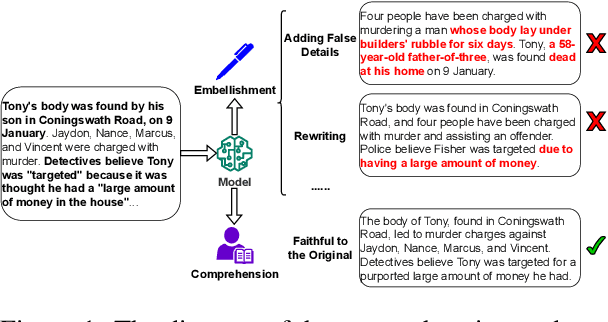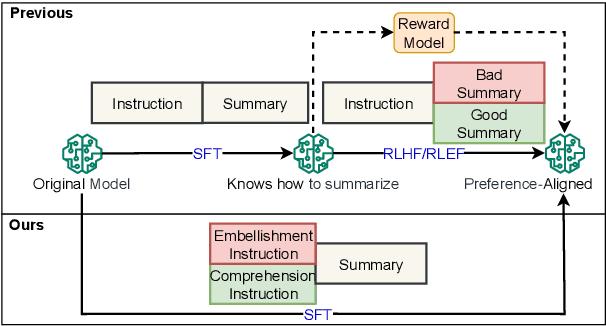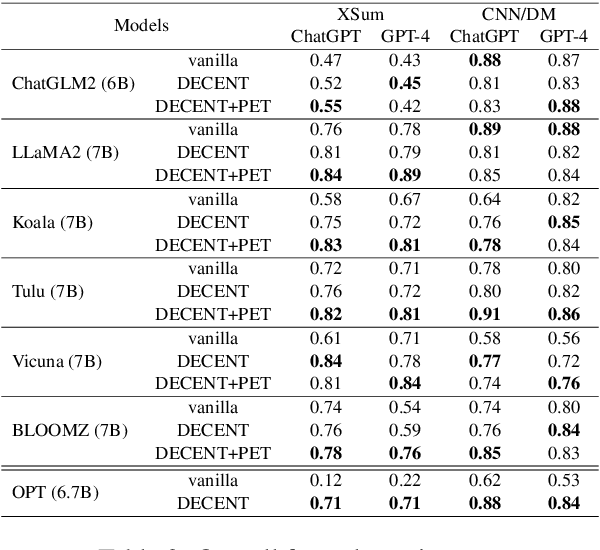Zekun Yao
Improving Factual Consistency of Text Summarization by Adversarially Decoupling Comprehension and Embellishment Abilities of LLMs
Nov 01, 2023



Abstract:Despite the recent progress in text summarization made by large language models (LLMs), they often generate summaries that are factually inconsistent with original articles, known as "hallucinations" in text generation. Unlike previous small models (e.g., BART, T5), current LLMs make fewer silly mistakes but more sophisticated ones, such as imposing cause and effect, adding false details, and overgeneralizing, etc. These hallucinations are challenging to detect through traditional methods, which poses great challenges for improving the factual consistency of text summarization. In this paper, we propose an adversarially DEcoupling method to disentangle the Comprehension and EmbellishmeNT abilities of LLMs (DECENT). Furthermore, we adopt a probing-based parameter-efficient technique to cover the shortage of sensitivity for true and false in the training process of LLMs. In this way, LLMs are less confused about embellishing and understanding, thus can execute the instructions more accurately and have enhanced abilities to distinguish hallucinations. Experimental results show that DECENT significantly improves the reliability of text summarization based on LLMs.
Quantum-Classical Machine learning by Hybrid Tensor Networks
May 15, 2020



Abstract:Tensor networks (TN) have found a wide use in machine learning, and in particular, TN and deep learning bear striking similarities. In this work, we propose the quantum-classical hybrid tensor networks (HTN) which combine tensor networks with classical neural networks in a uniform deep learning framework to overcome the limitations of regular tensor networks in machine learning. We first analyze the limitations of regular tensor networks in the applications of machine learning involving the representation power and architecture scalability. We conclude that in fact the regular tensor networks are not competent to be the basic building blocks of deep learning. Then, we discuss the performance of HTN which overcome all the deficiency of regular tensor networks for machine learning. In this sense, we are able to train HTN in the deep learning way which is the standard combination of algorithms such as Back Propagation and Stochastic Gradient Descent. We finally provide two applicable cases to show the potential applications of HTN, including quantum states classification and quantum-classical autoencoder. These cases also demonstrate the great potentiality to design various HTN in deep learning way.
 Add to Chrome
Add to Chrome Add to Firefox
Add to Firefox Add to Edge
Add to Edge